Dill Seed Benefits, How To Use, Side Effects, Ayurveda Details
By – Dr JV Hebbar
Dill seed is an ancient Indian spice. Its seeds, seed oil and whole plant is used in Indian cuisine. It is mainly used in digestive disorders. It is also called Indian Dill.
Botanical name: Anethum sowa / Peucedanum graveolens
Family: Umbelliferae (Satapushpa kula)
Table of Contents
Vernacular names
Hindi name: Soyo
English name: Dill, Dil, Dill plant, Indian Dill
Telugu name: Sadapa Vittulu
Tamil name: Satakuppi
Bengali name: Saluka
Marathi name: Shepu
Gujarati name: Suva
Kannada name: Its seeds are called Shataapu and the plant is called Sabbasige soppu
Arabian name: Shibith
Dill home remedies
For bloating, belching
1. Shatapushpa hot infusion in bloating, acid belching, heaviness of abdomen etc:
10 grams of seeds of Shatapushpa are taken and added to 1 cup of hot water. After half an hour this is filtered and served. This relieves gaseous distension of abdomen, acid belching, pain abdomen, tastelessness, heaviness of the abdomen etc.
For worm infestation
2. Shatapushpa choorna in abdominal pain and worm infestation of children:
2-3 grams of fine powder of dill seeds are mixed with a pinch of salt and taken along with warm water or buttermilk. This helps to relieve the abdominal pain, pricking sensation in the anal region followed with worm infestation etc. found in children.
For irregular menstruation
3. Dill and jaggery in irregular menstruation and headache:
Equal quantities of jaggery and Dill seed powder are taken and pounded well to make into bolus of 2-5 grams. This is taken daily during bed time, before 1 week of expected date of menstruation. This corrects irregular menstruation and the menstrual headache effectively.
For joint pain
4. Whole plant fine paste in joint pain:
The fresh plant is taken and fine paste is made by grinding. This is warmed a little and applied over the joints.5-6 days medication helps to relieve swelling as well as pain caused in the joints.
For osteoarthritis
5. Dill oil for osteoarthritis/joint pain:
Application of Dill oil (by mixing with sesame oil) over the joints pacifies joint pain significantly.
Read related: 5 Black Gram Remedies For Sex Power, Head Lice, Joint Pain
For cough, sore throat
6. Sugar candy and Dill seed in cough and sore throat:
3 grams of Dill seeds and sugar candy are taken and chewed for 3-5 minutes. This can be repeated 4-5 times in a day. This subsides cough, cold and sore throat.
A simple spice has several health benefits and it is necessary to appreciate the health benefits while preparing the dishes out of these spices.
Click to consult Dr MS Krishnamurthy MD (Ayu), PhD
Sanskrit synonyms
Shatahva, Shatapushpa – having numerous flowers
Chatra, chatrapushpa, shatachatra – inflorescence has umbrella shape
Pitika – Flowers are in yellowish in color
Misi – Stimulate appetite
Karavi – Satapushpa is very potent herb
Ghosha – Shatapushpa is cultivated in field
Classical categorization
Charaka
Asthapanopaga – herbs that are used in decoction enema therapy
Anuvasananopaga – herbs that are used in oil enema therapy
Bh.Pr.Ni – Haritakyadi varga
Medicinal qualities
Rasa (taste) – Katu (pungent), Tikta (bitter)
Guna (qualities) – Laghu (light to digest), Teekshna (piercing, enters deep tissues)
Vipaka (taste conversion after digestion): Katu (pungent)
Veerya (potency): Ushna (hot)
Effect on Tridosha: Balances Vata ad Kapha. It increases Pitta
Pharmacological action – Aromatic, stimulant, Carminative
According to Bhojana Kutuhalam twelfth chapter, The leaves of shatapushpa are hot in potency, sweet in taste, and treat gulma. Alleviates vata, stimulates digestive fire, wholesome to the body, aggravates pitta dosha and imparts taste.
The seeds are used in raw form and also after frying with ghee. This is served as a ‘Mukhvas’ or mouth freshener in restaurants and hotels. This is used as a customary substance in houses during the celebration of festivals like Diwali, Holi, Makara Sankranti etc with the belief that its offering to the God and guests will bring prosperity to the beings as well as the house.
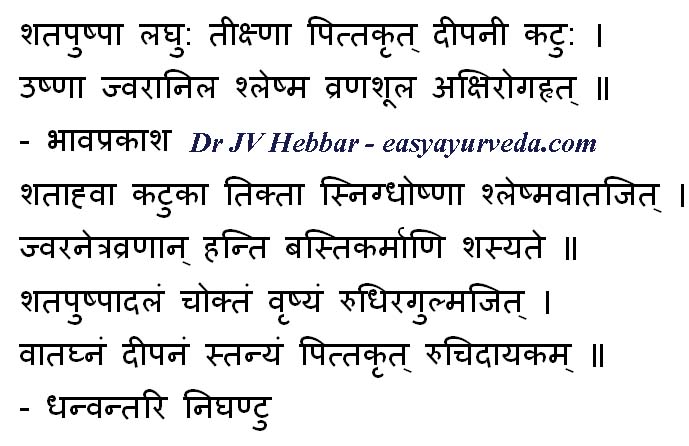
Spices, dill weed, dried
Is a natural aphrodisiac, useful in uterine fibroids, galactagogue, improves taste
Rasa – pungent, bitter
Guna – light, piercing, sharp
Veerya – hot
Vipaka – pungent
Effect on Doshas
Vata balancing
Pitta increasing
Kapha balancing
Dill health benefits
Deepani – improves digestion strength
Useful in
Jvara – fever
Diseases of Kapha and Vata predominance
Vrana – non healing wounds
Shoola – abdominal colic pain
Akshi Roga – eye disorders
Akshivrana – ulcers in the eye
Bastikarma – enema Panchakarma therapy
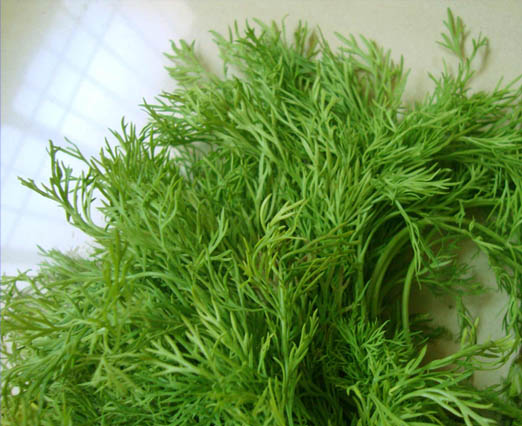
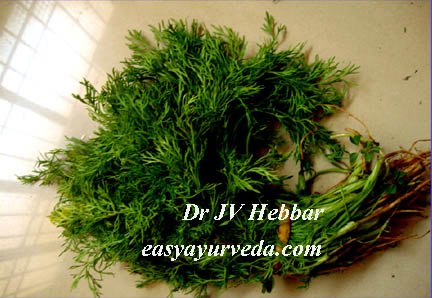
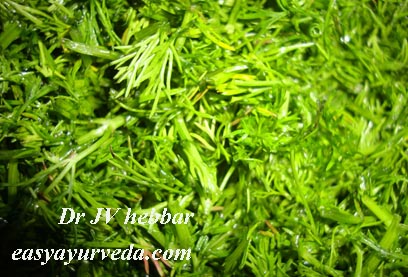
Dill leaves
Vrushya – natural aphrodisiac
Rudhira Gulmajit – useful in uterine fibroids,
Vataghna – balances Vata
Stanya – acts as galactogogue
Pittakrut – increases Pitta
Ruchidayaka – improves the taste of food.
Dill plant recipe is given to lactating mothers to improve breast milk secretion.
Qualities:
Ayurveda explains dill as
anti flatulent (vatanulomana),
Carminative (deepana),
Digestive (pachana),
Analgesic (vedanashamaka),
Anti inflammatory (shothahara) and
a rejuvenation, anti aging tonic (balya rasayana).
Shatapushpa in enema therapy
In almost all the enema therapy (Basti karma), Shatapushpa kalka (paste of Dill seed) is used as a necessary ingredient. It aids in digestion and transferring of phyto-chemicals of the enema into the system of the patient. Enema therapy is usually done to achieve Vata balance and Shatapushpa mitigates Vata.
Dill seeds for cancer
A team of Russian scientists have developed glaziovianin A, which inhibits the growth of human tumor cells. They evaluated this compound in in-vivo study using sea urchin embryo assays. It yielded several promising candidates selectively affecting tubulin dynamics. Glaziovianin A. is derived from Parsley and dill seeds
Dill seed for constipation
Are dill seeds useful for weight loss? Does it relieve gas and bloating? Could it help in constipation?
Dill seed is very beneficial to relieve gas and bloating.
It is not directly indicated in constipation. However, if the cause of constipation is gas accumulation, then dill seeds are useful.
As per Ayurveda, it has some role in losing weight as per research
Read: Dill seed benefits, remedies, side effects
Ayurvedic medicines
Ayurvedic medicines with Shatapushpa:
Narayan oil – useful pain relieving, anti inflammatory Ayurvedic massage oil
Gorochanadi GUlika – A traditional Ayurvedic product used in cough, cold, asthma, bronchitis etc.
Maharasnadi kashaya – Useful to relieve inflammation, rheumatoid arthritis etc.
Maha Laxadi oil – useful in sciatica, spondylosis
Pippalyadi taila,
Shatapushpadi choora etc.
Side effects
Dill seed side effects:
Overdose may cause Pitta increase, burning sensation, worsening of gastritis.
It is not indicated in conditions with Pitta dominance, like gastritis.
It is best to avoid its use during menstrual periods.
Interaction with medicines, supplements
Can this be used while taking Homeopathic medicine?
Yes. This product does not react with homeopathic medicine.
Can this medicine be continued while taking supplements like multivitamin tablets, Omega 3 fatty acids etc?
Yes. Generally, this product goes well with most dietary supplements. However, if you are taking more than one product per day, please consult your doctor for an opinion.
With western
medicines
Seek your
doctor’s advice if you are taking this product along with other western
(allopathic / modern) medicines. Some Ayurvedic herbs can interact with modern
medicine.
If both Ayurvedic and allopathic medicines are advised together, then it is
best to take Allopathic medicine first, wait for 30 minutes and then take the
Ayurvedic medicine.
Shatapushpa dose
Powder – 1 – 3 grams per day
Dill seed oil – 1 – 3 drops
Dill leaves – used as food.
Useful parts
Fruits
External application
Paste prepared with dill seeds along with Tagara, licorice, Kushta and sandalwood and ghee is used to apply externally to relieve headache, shoulder and back pain. Reference: Charaka Samhita Rajayakshma Chikitsa.
Dil oil is used as ingredients in syrups to improve digestion strength, such as Bio-sal Syrup.
Phytoconstituents
Fruit contains 2 – 4 % of Volatile oil. Chief constituent of Volatile oil is aromatic liquid,known as Carvone. Also contain dihydrocarvone,D – limonene, Phellandrene, Terpenes
Morphology
Annual herb
Root – Tap root
Stem – Aerial, erect, branched, glabrous
Leaf – Cauline and ramal, petiolate, hollow, green, glabrous, alternate
Inflorescence – Compound umbel
Flower – Ebracteate, small, Yellow, Aromatic
Fruit – Cremocarp
Seed – Endospermic
Systemic Action (Sthanika Karma)
Nervous system – Anti inflammatory and Analgesic. Promotes wound healing
Digestive System – Appetizer, increases digestive fire, Antispasmodic, facilitates movement of vata dosha in normal direction, Anthelmintic. Indicated in Vomiting, loss of appetite, indigestion, Abdominal distension, abdominal cramp etc.
Circulatory System – Improves the heart function.
Respiratory system – Pacifies kapha dosha Indicated in cough, and breathing disorders, Hiccough etc.
Excretory System – Induce urine production. Indicated in Dysuria.
Reproductive System – Improves breast milk production. Indicated in Dysmenorrhea, Oligomenorrhea. Indicated as a post delivery care medicne.
Skin – it is indicated in skin disorders.
Satmikarana – Sukra nasaka
Tapakrama – Indicated in fever




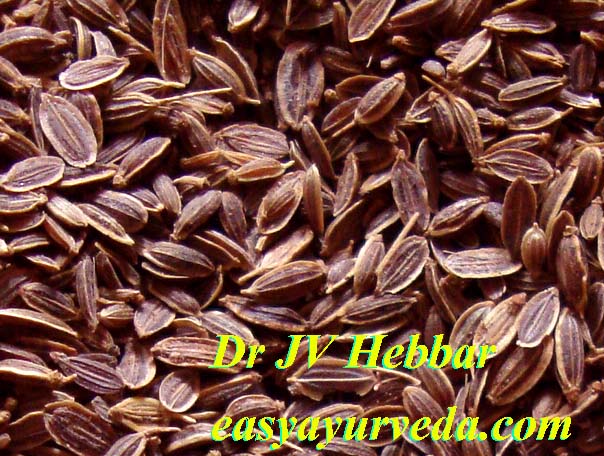







22 comments
Victor
Hello!
Thanks for article!
I am also interested in the properties of dill and fennel!
Could you answer, please, what is the source of sanskrit text?
Dr J V Hebbar MD(Ayu)Author
Read Dill benefits above. Source of Sanskrit Verse – I have mentioned them within the verses – Bhava Prakasha and Dhanvantari Nighantu.
Fennel benefits – https://www.easyayurveda.com/2013/02/15/fennel-seed-health-benefits-dose-how-to-use-ayurveda-details/
Philip
Very informative and useful
Sipho Mvelase
I read an article talking about using dill seeds to improve memory to pass exams and promotion . How true is this and how is applied? I have bought Indian Dill Seeds as the avaialble one in my country SA
Dr J V Hebbar MD(Ayu)Author
I have not come across such a reference from any research articles.
Srividhya
Dear doctor, how should dill be used to increase breast milk? If leaves are not available, can seeds be used? Please give method of usage and normal dosage
Thanks for all the info you provide.
saroj Kumar
Thanks for your noble services. Very useful article. God bless you.
Dr J V Hebbar MD(Ayu)Author
Welcome.
Rasik Shiroya
I want to establish a Suva oil extraction plant .
Is there market for it?
Rasik Shiroya
How many quantity requires at national and international level? How we can contact requires person?
Dr J V Hebbar MD(Ayu)Author
No idea.
Dr J V Hebbar MD(Ayu)Author
Hi, mild roasting and putting in mixer is fine. You need not turn it into very fine powder.
You can even just pound it in mortar and pestle and use it as it is.
magy maxy
Thanks for the information, please how do i use dill leaf to increase milk supply cause i can’t find the seed where i live.
Dr J V Hebbar MD(Ayu)Author
Dill leaves can be used as any vegetable. It can be made into chutney / sabji along with other vegetables and consumed on daily basis. 10 – 15 grams per day.
Superna Sharma
Kindly advise any precautions l need to take with my food and if sounf and ajwain also need to be used. Please also advise how to use these herbs.
Shivangi Mishra
Can we use this in diabetes also?
Jignasha
Can we use suva,. Dill for fertility, or concive time
Dr J V Hebbar MD(Ayu)Author
It is not used in infertility treatment.
Sulekha
is it useful after a miscarriage
, as it is given to my sister by a doctor…
Piroja
Can Dill be used to naturally enhance breast size? Should the leaves be consumed or the seeds?…in what quantity?
Any other herbs that can be used also for the same purpose?
Thank you.
Vaidya
Thanks for valuable information, are dill seeds safe in pregnancy????
Dr J V Hebbar MD(Ayu)Author
In small quantities, it is fine to use occasionally. But in people with precious pregnancy, i.e. pregnancy after many years of marriage, or in people with bleeding during pregnancy, dill seeds are better to avoid, as it is a spice and being hot, can worsen bleeding.